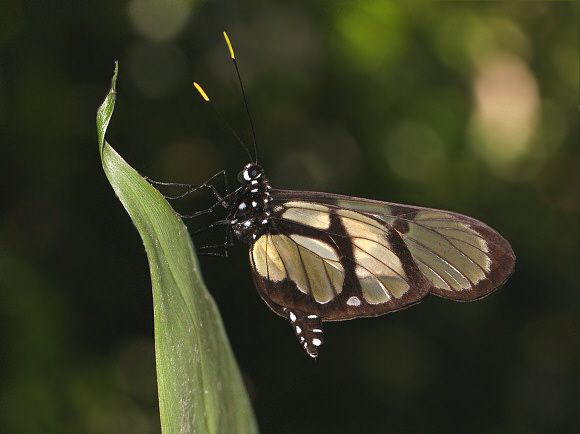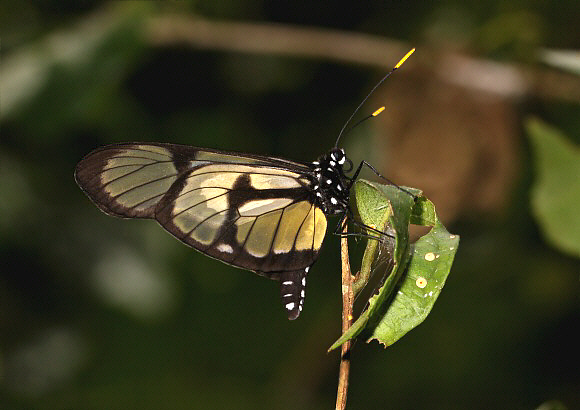
Introduction
The subfamily Dismorphiinae includes the Wood Whites of Europe, and about 50 neotropical species. Features common to all Dismorphiine genera include tapered and down-curved antennae, long thin abdomens, elongated forewings and hindwings that are noticeably larger in area than the forewings.
In several Dismorphiine genera sexual dimorphism is pronounced, with females looking like typical Pierids, while the males are patterned in orange and black, and resemble tiger complex Ithomiines. The naturalist Henry Bates upon observing this phenomenon realised that the palatable males had evolved to become mimics of toxic Ithomiines. His discovery is now known as Batesian mimicry.
There are 3 species in the genus Patia – cordillera, orise and rhetes. All were all formerly placed in the genus Dismorphia. In Patia the colour and pattern of both sexes are similar, but the apex of the hindwing is very angular in males, whereas in females it is rounded.
Patia orise occurs as 2 distinct subspecies. P. orise denigrata occurs from Costa Rica to Peru and is a mimic of the orange and black tiger-complex Ithomiines.
P. orise orise is found from Guyana to Bolivia. It is a superb mimic of the Methona glasswings. The wing pattern and colour is almost identical, the black abdomen has the familiar Methona-like white spots, and even the antennae are “copied” – having black shafts and prominent yellow clubs. The 2 genera can easily be distinguished however because Patia have much larger hindwings, and have 6 legs as opposed to the 4 legs found in Methona and other Ithomiinae.
Habitats
This species is found in primary rainforest at altitudes between about 0-1200m.
Lifecycle
The early stages are unknown.
Adult behaviour
Males are usually encountered singly, sitting on stems or leaves between about 2-3 metres above ground level, and usually in dappled sunlight. Occasionally they can also be seen in more open situations in forest glades. The butterflies nectar at Inga.

